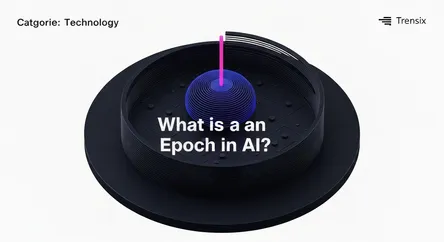Technology
What is an Epoch in AI?

Discover what an epoch is in AI. Learn how one complete pass through a training dataset helps machine learning models learn and improve their accuracy.
What is it?
An epoch represents one complete cycle through the entire training dataset during the training of a machine learning model. Imagine you're teaching a student using a textbook; one epoch is like the student reading the entire book from start to finish once. During training, the dataset is often divided into smaller pieces called 'batches'. The model processes one batch at a time in what's called an 'iteration'. An epoch is therefore completed after the model has gone through enough iterations to see every single data point in the training set. This repetitive process allows the model to adjust its internal parameters and learn the patterns hidden within the data.
Why is it trending?
The term is trending because it's a fundamental concept in deep learning, the engine behind today's most advanced AI. As more developers and businesses adopt AI, understanding its core terminology is crucial. The number of epochs is a key hyperparameter that data scientists must carefully tune. Too few epochs can result in an 'underfit' model that performs poorly, while too many can lead to 'overfitting,' where the model memorizes the data instead of learning from it, failing to generalize to new information.
How does it affect people?
The number of epochs directly impacts the performance of AI services we use daily. The accuracy of a language translator, the relevance of e-commerce recommendations, and the reliability of a self-driving car's object detection all depend on how well the underlying models were trained. A properly chosen number of epochs helps create efficient and accurate AI, leading to better user experiences. Conversely, poorly tuned training can result in biased, inaccurate, or unreliable AI systems, affecting the quality and fairness of the technology we interact with every day.